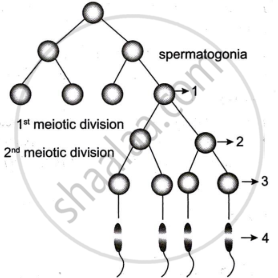Advertisements
Advertisements
Questions
Women are often blamed for producing female children. Consequently, they are ill-treated and ostracised. How will you address this issue scientifically if you were to conduct an awareness programme to highlight the values involved?
In our society the women are often blamed for giving birth to daughters. Can you explain why this is not correct?
Solution
Women are never responsible for determination of the sex of a child. Moreover, it is not appropriate to ill-treat a woman for giving birth to a girl child, as both males and females are equally important for the balance of nature and continuity of our species.
All human-beings have 23 pairs of chromosomes. A human sperm (haploid) has 22 autosomes and one of the two types of sex chromosomes, i.e. either X or Y. On the contrary, human females have 22 autosomes that are exactly same as males and contain two X chromosomes. The sex of an individual is determined by the type of the sex chromosome (X or Y) contained by the sperm that fuses with the ovum.
If the fertilising sperm has an X chromosome, then the baby would be a female and if a sperm with Y chromosome fuses with the ovum, it will develop into a male child. Thus, males are responsible for determination of the sex of a child.
APPEARS IN
RELATED QUESTIONS
Define spermiogenesis.
Define spermiation.
Draw a labelled diagram of sperm.
What is gamete formation?
The process which the sperm undergoes before penetrating the ovum is ____________.
Define gametogenesis.
Identify the longest period of menstrual cycle.
Four primary spermatocytes give rise to ______.
How many sperms are formed from a secondary spermatocyte?
At the time of organogenesis, genes regulate the process at different levels and at different time due to ______.
During embryonic development, the establishment of polarity along anterior/posterior, dorsal/ventral or medial/lateral axis is called ______.
Besides activating the egg another role of a sperm is to carry ______ to egg.
The process of release of spermatozoa from Sertoli cells into cavity of the seminiferous tubules is called ______.
The principal tail piece of human sperm shows the microtubular arrangement of ______.
Penetration of the sperm in the ovum is followed by ______
Human milk differs from cow's milk because human milk contains:
What is the difference between a primary oocyte and a secondary oocyte?
In spermatogenesis, at the end of the first meiotic division ______ are formed.
Draw a neat and labelled diagram of spermatogenesis.
The diagram given below shows the various steps in spermatogenesis.

- Name the parts labelled '1', '2' and '3'.
- Name the process by which part '3' changes to part '4'.
